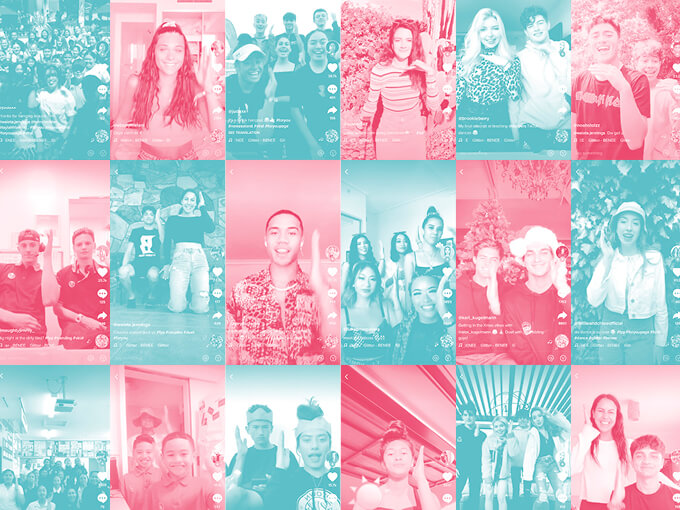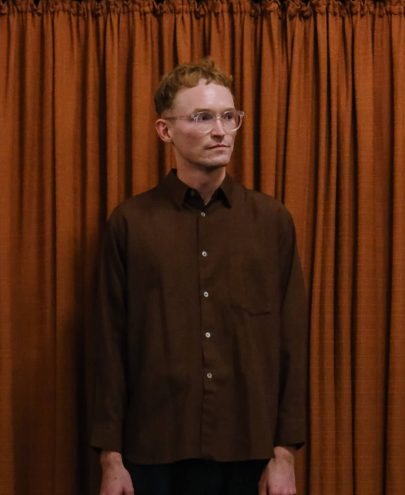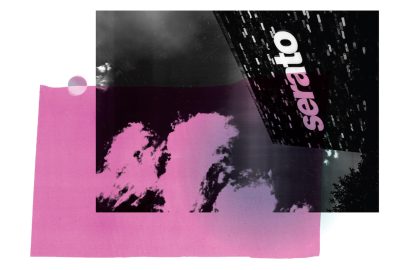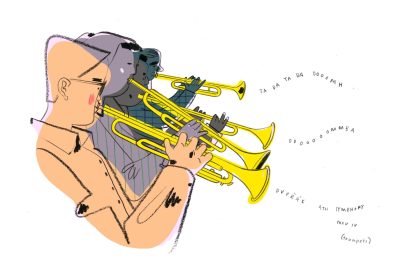Apr 2, 2020 Music
How an Auckland teenager’s song went viral from a 15-second video on on a sharing app, and what it means for the future of the music industry.
Late last year, Auckland musician Benee (real name Stella Bennett) went viral. A simply choreographed dance to her song “Glitter” became a meme on TikTok, a video-sharing app that lets its 500 million monthly users shoot and post videos with their phones, adding visual and audio effects, including music from artists big and small.
The content on the app is diverse — short comedy skits, instructional cooking videos, cats, political rants — but the videos that have come to define the app are easily replicated dances to 15-second snippets of pop songs. TikTok allows users access to a massive library of officially licensed songs for their videos (Universal Music, Sony Music, and Warner Music all currently license their catalogues) or users can upload their own audio to the app’s sound bank to be available to other users.
In November, Rotorua teen Waiata Jennings posted a video on her account dancing to “Glitter”, the fourth single from Benee’s debut EP Fire on Marzz. The dance Waiata created is perfect for TikTok — simple to learn and fun to do, alone or with a group. It’s been recreated by parents holding babies, a teen and her nurse, and groups of school friends. Prime Minister Jacinda Ardern was asked to do it at Ratana and National MP Nicola Wills and a group of Young Nats posted a video of themselves doing the dance with the caption “Anyone heard of TikTok?”
At the time of writing, “Glitter” had been featured in over 522,000 videos on TikTok, some of which have been played millions of times.
More important than its permeation of New Zealand political life is TikTok’s impact on popular music charts. Lil Nas X’s “Old Town Road”, the longest running No 1 single in the history of the Billboard charts, initially found an audience on the app via the “Yeehaw Challenge” — one of about 100 attempts the rapper made to make the song go viral.
More recently, “The Box”, by the relatively unknown Roddy Ricch, beat Justin Bieber’s cynically TikTok-engineered “Yummy” to Billboard’s top spot and the popularity of Arizona Zervas’s “Roxanne” on the app led to the artist joining Columbia Records, its second major signing of a viral star after Lil Nas X.
TikTok’s rapid ascent in music-industry influence raises a lot of questions about the forever changing methods of music discovery. Paul McKessar, Benee’s manager, says the brevity of 15-second videos rewards songs that quickly engage the listener, and if a song can make an instant connection on TikTok, it’s got a good chance of finding an audience beyond it.
But can you game the system? Was “Glitter” planted? No way, Benee and McKessar both tell me. McKessar only heard of the app when his 14-year-old daughter told him that one of Benee’s songs was trending. Benee had no idea either. “People kept telling me that everyone was dancing to my song and I thought, ‘Aw that’s so cute,’” she says. “But then I downloaded it and sort of realised the gravity of it.”
McKessar says TikTok is hard to game, but that’s why unexpected and eccentric songs can take off on the platform.
This doesn’t mean that already-popular songs from Camila Cabello and Ariana Grande don’t also soundtrack millions of videos, but because the videos don’t directly contribute to chart metrics, the app tends to have a far greater impact on the fortunes of lesser-known artists.
McKessar says the song’s blowing up on TikTok has been followed by a related migration to streaming services. Before “Glitter” was big on TikTok, it was being streamed about 50,000 times a day on Spotify; that figure has grown to half a million in just a few months.
I wondered how Benee felt as an artist about the way her song had grown so big in a way she didn’t anticipate and couldn’t control. Having your song become popular on TikTok can be stamped onto its identity — it becomes a “TikTok song”. At Laneway Festival, fans were heard asking, “Has she done the TikTok one yet?”
“I think the dance is cool,” she says, unfazed. “People have taught me it and asked me to be in videos with them
and I love that and will say yes. We talked about me making a TikTok but I decided I’m happy to just let it be something my fans and people on TikTok can do. I probably would never make a TikTok myself.”
“We talked with the record company about it,” McKessar adds, “and they sort of had to be supportive of what Stella’s artistic project and vision is, and they were cool about it in the end. But yeah, Stella did have to say ‘Hey I don’t want to be known as a TikTok artist.’”
However, TikTok is more than simply a promotional tool; it provides a level of engagement with music that so many artists revere. For Benee, seeing people from all around the world dancing together and being reached
by something she created is, regardless of any flow-on effects, extremely gratifying.
While there are questions to be asked about the permanence of TikTok and the type of promotional model it offers artists — especially given its royalty and licensing arrangements (it pays an astonishingly small licence fee per video made, rather than the per-play rate paid by streaming platforms) — the app will likely continue to shape pop music in 2020.
The next breakthrough artist might be just 15 seconds away.
This piece originally appeared in the March-April 2020 issue of Metro magazine, with the headline ‘Tick, tick, boom’. *Note: since then, Benee has had a second song go viral on TikTok – Supalonely.






